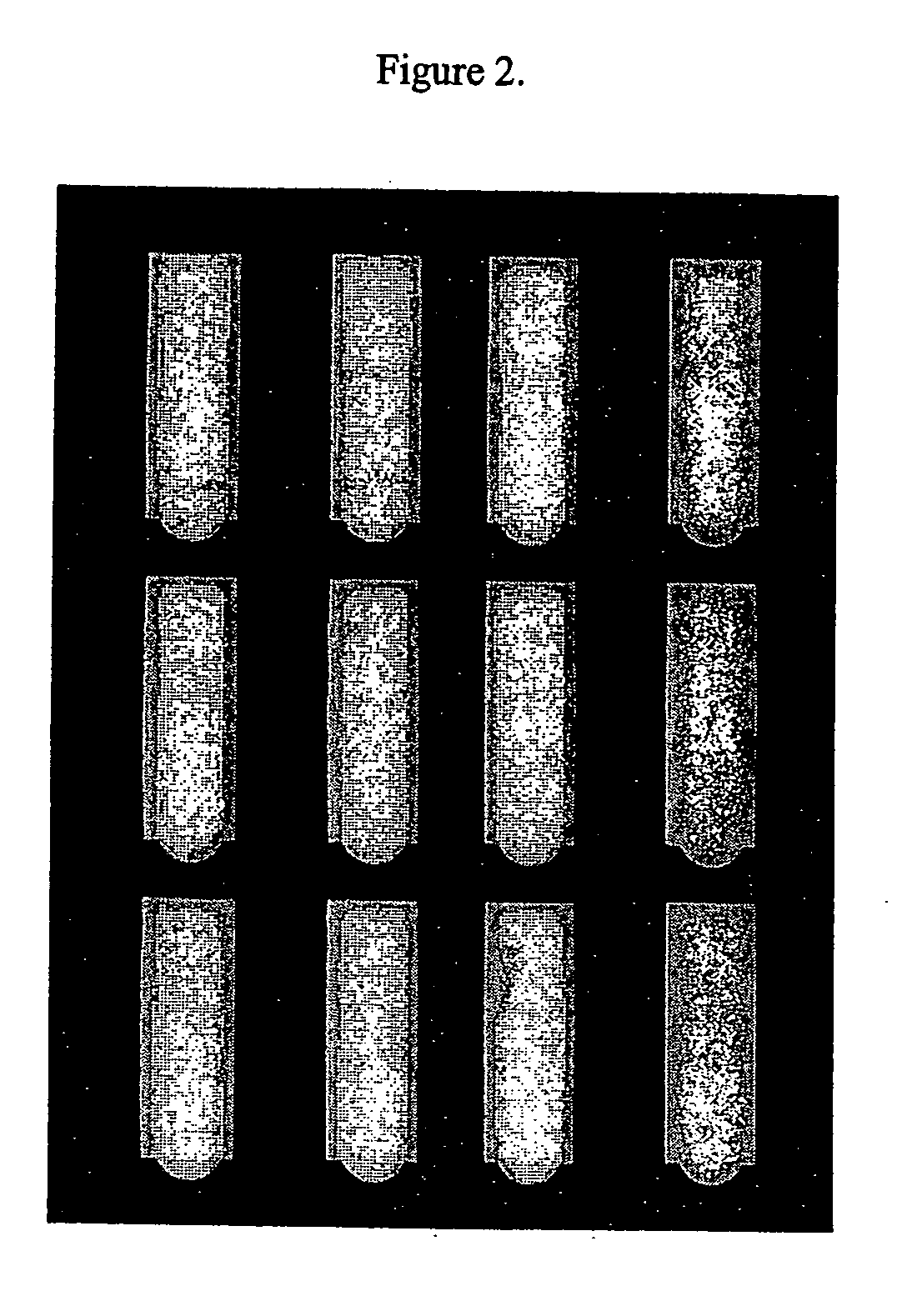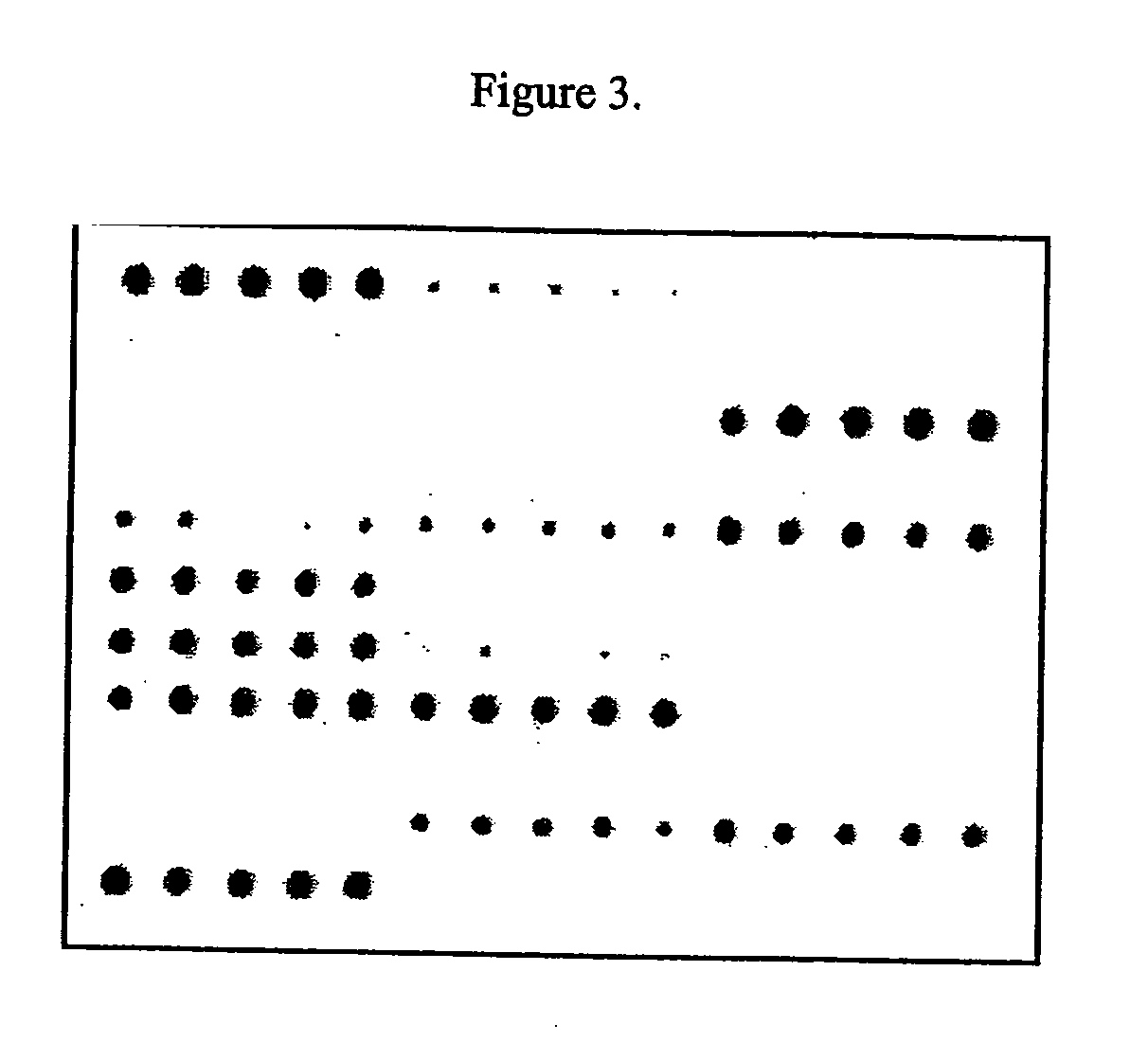Quantitative alkaline-phosphatase precipitation reagent and methods for visualization of protein microarrays
a technology of alkaline phosphatase and precipitation reagent, which is applied in the field of quantitative alkaline phosphatase precipitation reagent and methods for visualization of protein microarrays, can solve the problems of ccds consuming relatively large amounts of power, single microscope objective typically has multiple lenses that are generally very expensive, and the reaction rate of this enzyme remains linear, so as to improve sensitivity and facilitate visualization. , the effect of rapid and economical method
- Summary
- Abstract
- Description
- Claims
- Application Information
AI Technical Summary
Benefits of technology
Problems solved by technology
Method used
Image
Examples
Embodiment Construction
[0043] In a preferred embodiment, the present invention provides inexpensive methods for resolving colorimetric density representative of interactions between immobilized biological samples (e.g., protein or nucleic acid spots on a microarray) and various test substances. As used herein, biological samples refers to biological material (proteins, nucleic acids, tissues, etc.) associated with a biological material holding structure (e.g., a microarray substrate such as a protein or DNA chip substrate, a gel, etc.) in a manner that allows for detection of the biological material, or portions thereof (e.g., with the use of markers such as dyes, tags, labels, or stains), such as through the use of imaging (e.g., direct mapping).
[0044] One or more embodiments of the present invention are operable for use in multiple imaging applications, e.g., imaging of two-dimensional and three-dimensional objects, such as fluorescence imaging, reflective imaging, bar code imaging, densitometry, gel d...
PUM
 Login to View More
Login to View More Abstract
Description
Claims
Application Information
 Login to View More
Login to View More - R&D
- Intellectual Property
- Life Sciences
- Materials
- Tech Scout
- Unparalleled Data Quality
- Higher Quality Content
- 60% Fewer Hallucinations
Browse by: Latest US Patents, China's latest patents, Technical Efficacy Thesaurus, Application Domain, Technology Topic, Popular Technical Reports.
© 2025 PatSnap. All rights reserved.Legal|Privacy policy|Modern Slavery Act Transparency Statement|Sitemap|About US| Contact US: help@patsnap.com



